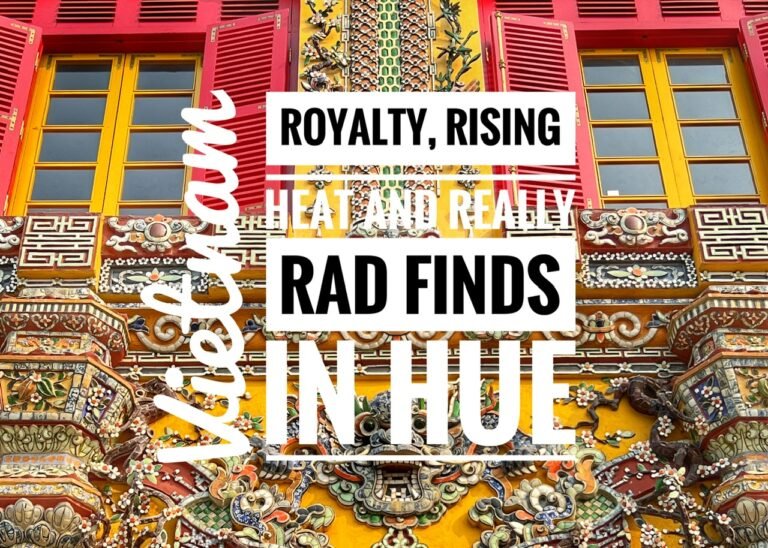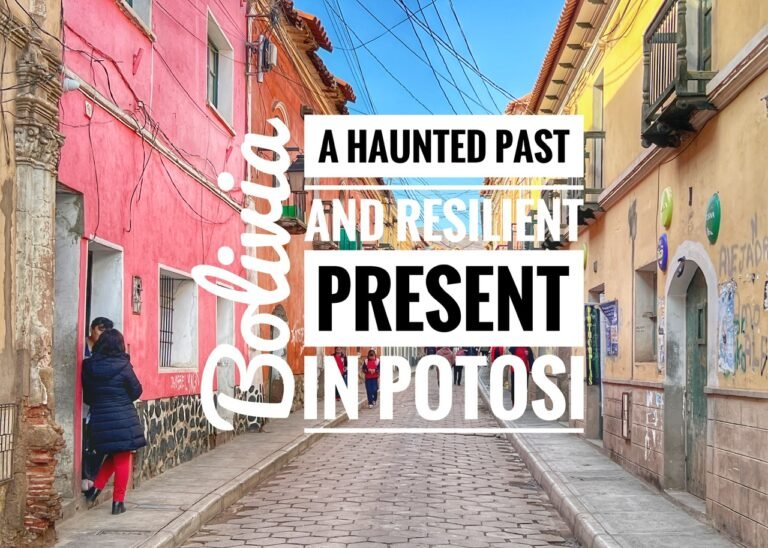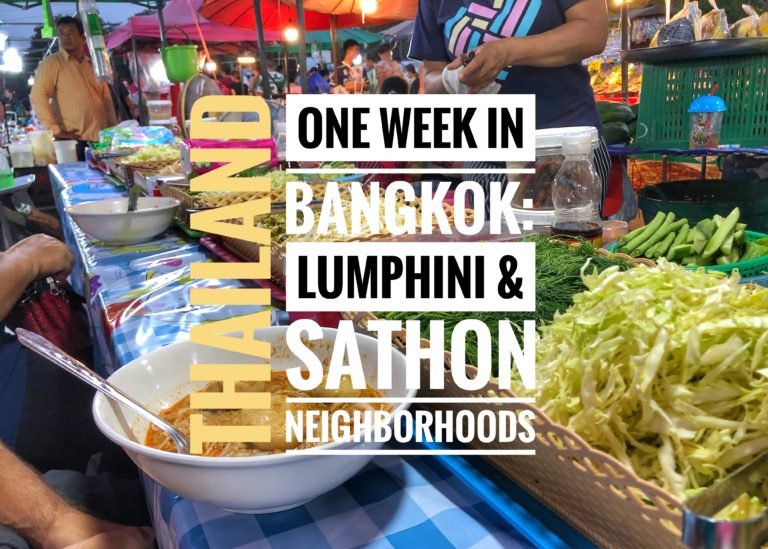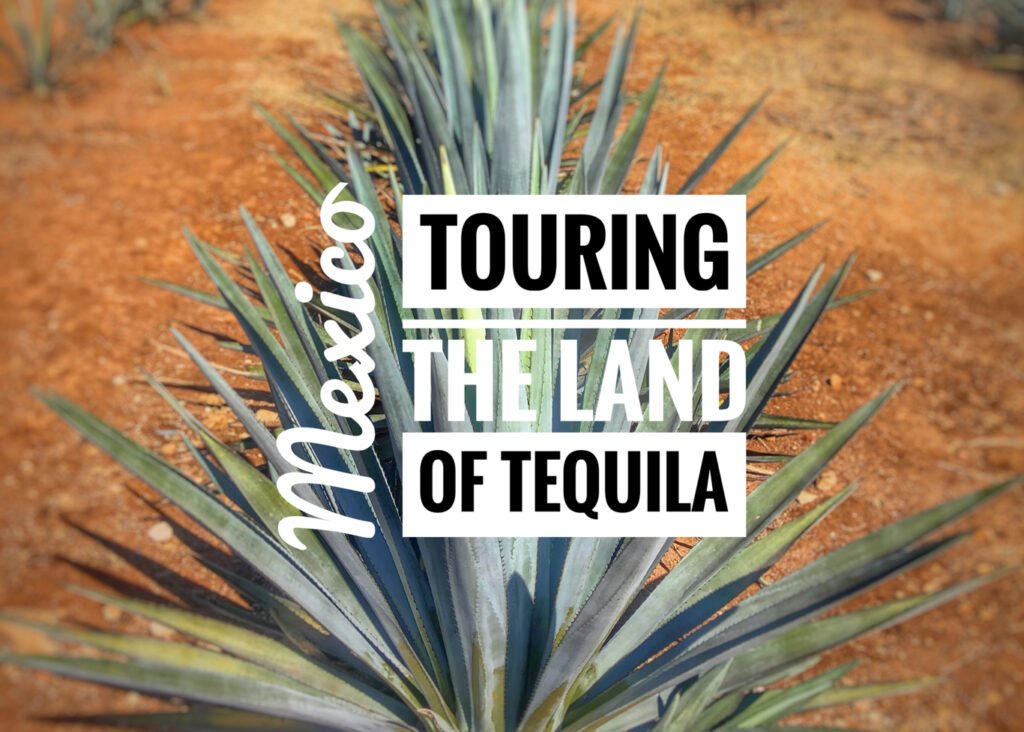
Tequila. The national drink of Mexico, has its birthplace in the state of Jalisco in, where else but the town of….Tequila. The town, it seems, came first. The name Tequila, translates to, “the place of cut feet” in acknowledgement of the shards of obsidian glass that litter the landscape in this part of Mexico. But in fact, this national drink is only allowed to be produced in five Mexican states: Jalisco, parts of Guanajuanto, Tamaulipas, Michoacan and Nayarit. (Like Champagne can only be produced in the champagne region of France.) Elsewhere, it is called Mezcal. For this reason, taking a tour to Tequila is a popular, and superb day trip option from Guadalajara, which is right in the heart of Jalisco.
There are only three ingredients in traditional tequila: water, yeast and this plant, the blue agave which you will find cultivated meticulously in rows throughout the endless rolling hills of Jalisco. Real Tequila must only contain 100% Blue Agave, otherwise it is another spirit like Mezcal, or unauthentic tequila. The blue agave is grown for 5-7 years before harvest. At harvest time the leaves are trimmed back to the base making it resemble a pineapple, or “piña”, which can weigh around 200 pounds!
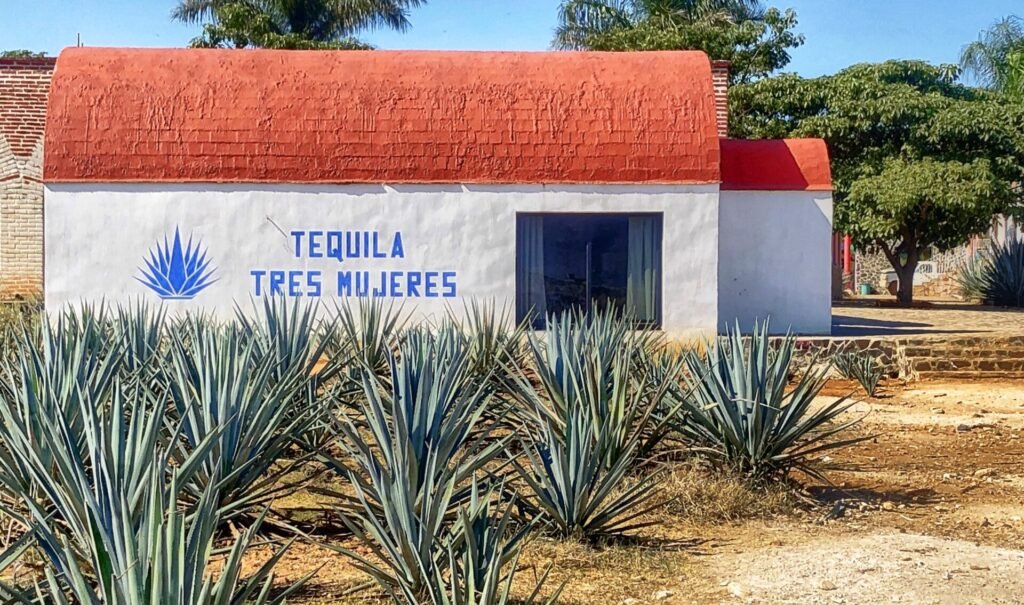
Visiting the world of Tequila can be much more of a cultural experience if you can book your visit to one of the many smaller family run “traditional” distilleries instead of visiting the more industrial (and tourist laden) Jose Cuervo or Sauza factories. We booked our tour via an AirBnb experience for $34/head which was a tremendous value for a nine-hour tour and unlimited tequila tastes, as well an education and appreciation for all things Tequila. We were happy to see that of almost all tours we looked at, including the ones we settled on, had stringent COVID policies.
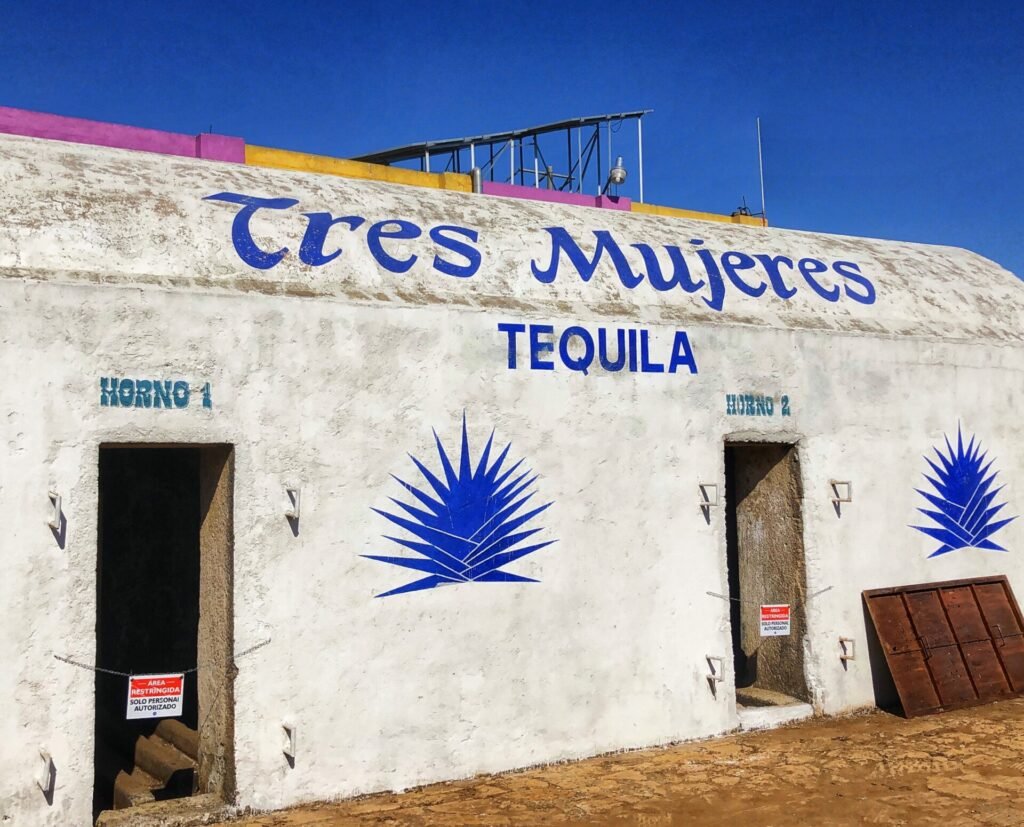
For our first stop we found ourselves at the traditional Tequila distillery of “Tres Mujeres” to receive our Tequila education. There are, in fact, three types of Tequila distilleries in Mexico which practice different methods of Tequila production: Industrial, artisanal and traditional. Tres mujeres is traditional. In order to make Tequila, first the blue agave is harvested by “Jimador” who removes the sharp agave leaves with a curved tool called a coa. The job of the jimador is back-breaking and brutal work and they traditionally get paid per TON…100 pesos or $5. The jimador trims the 200 plus leaves that protect the heart or piña of the agave until the whole heart is extracted from the ground. Only the “piña” of the agave plant is used to make tequila. Each plant can produce 5-7 liters of tequila. The next step is cooking/steaming the piña in traditional brick oven over several days which activates a chemical process within the piña that converts complex carbs into simple fermentable sugars. (www.izkalitequila.com.) It is this cooking/steaming process that can give the finished Tequila its unique somewhat sweet smoky aroma.
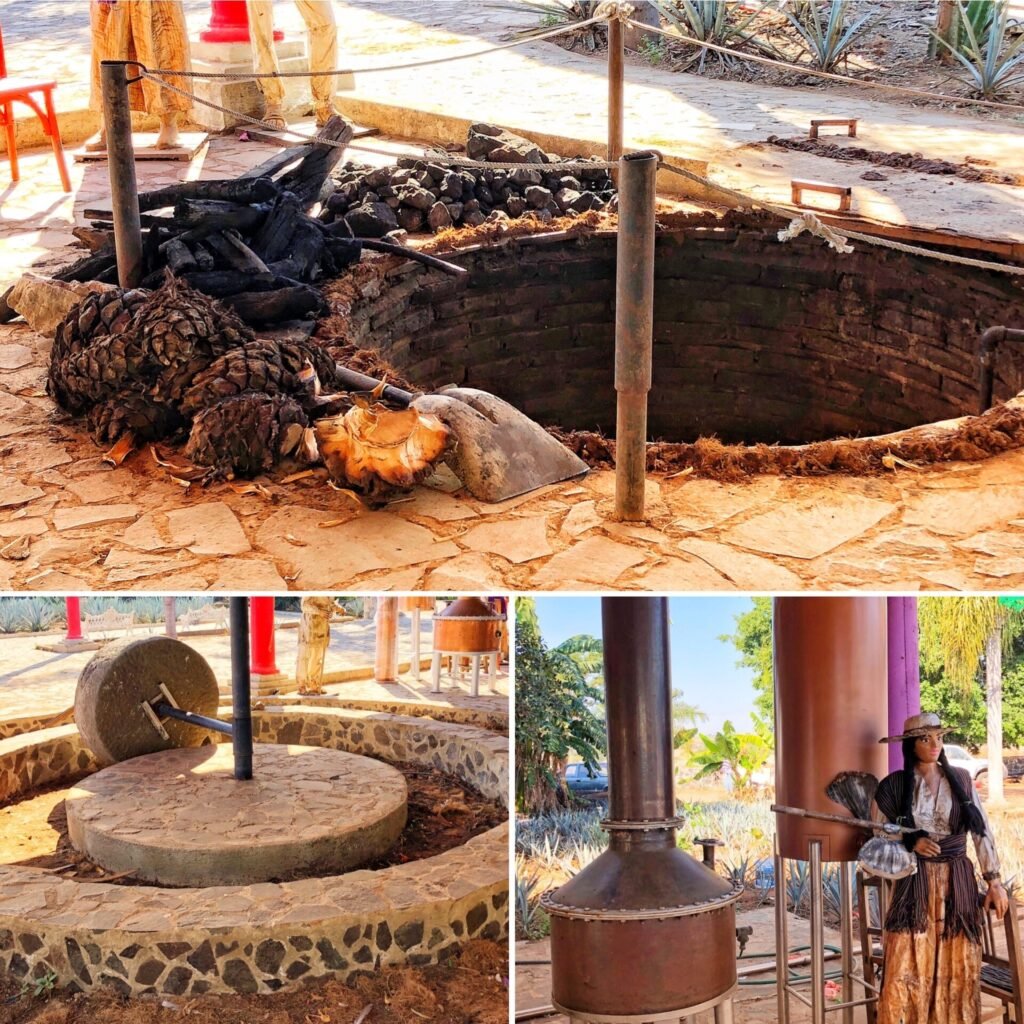
Once cooked, the agave heads are taken to an area for sugar extraction. The cooked piñas are crushed to release the juice which is then fermented. The most traditional method is to crush the piñas with a “tahona,” a giant grinding wheel operated by mules, oxen or tractors within a circular pit. (Bottom left.) Today’s distilleries use a mechanical crusher to separate the fiber from the juices.

Next comes the fermentation process when the sugars are transformed into alcohol within large wooden vats or stainless steel tanks, in this case. It is absolutely crucial that all tequilas are distilled twice; and to an alcohol content of at least 30%. Why? Because apparently tequila that is only distilled once can actually make you go BLIND, due to the high levels of methane still present in lower alcohol concentrations. This is why it’s imperative not to buy unlicensed “street tequila.” That bottle might be the last thing you see!
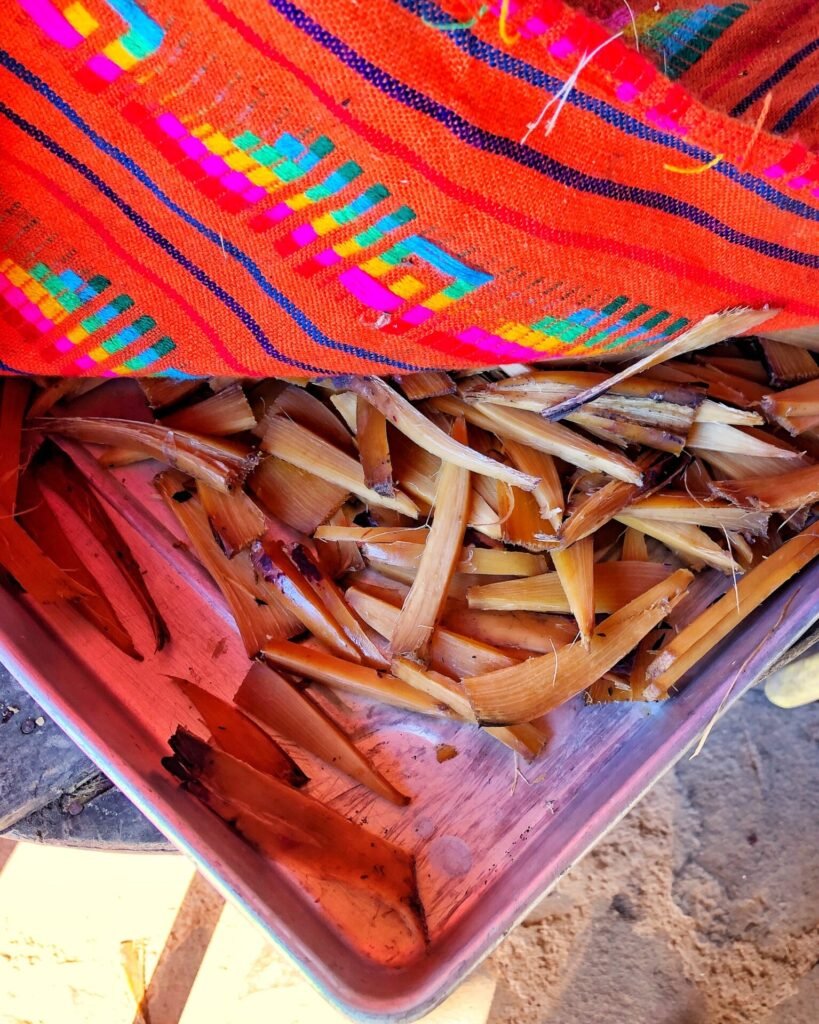
We then got the chance to try the cooked/baked agave prefermentation. You basically just chew on it and suck out the juice. It was very smoky and somewhat sweet in flavor…and not at all bad.
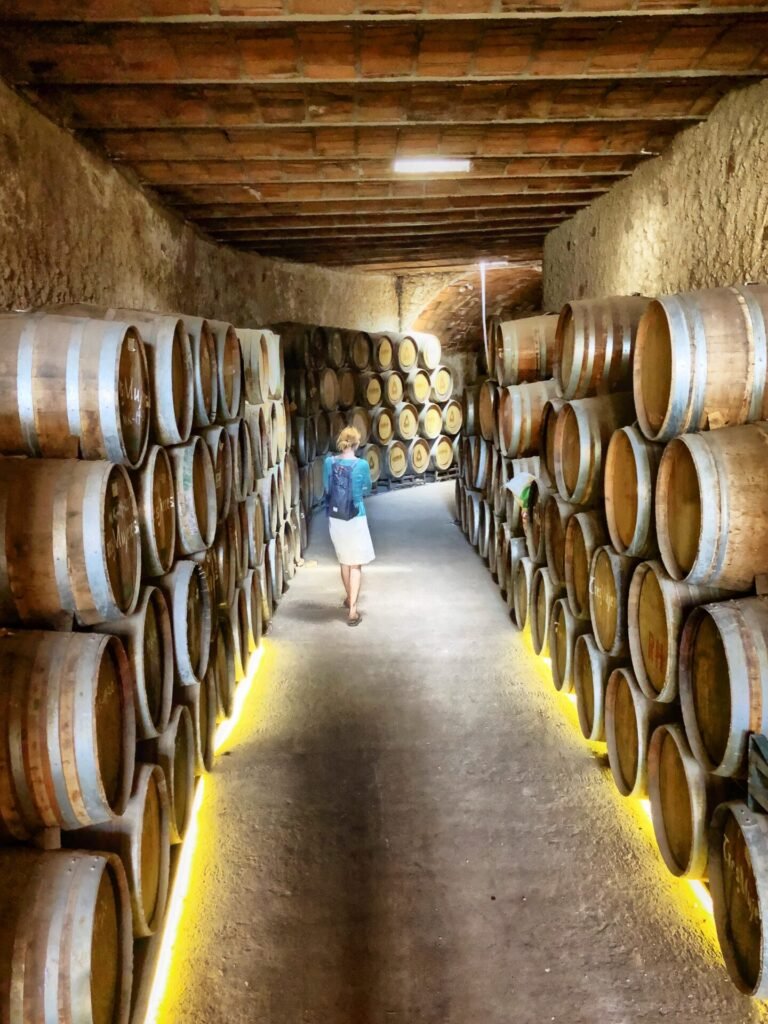

Heading down into the cellars. Almost all containers used in Tequila aging are French or American white oak barrels that have previously been used to age whiskey and bourbon. At Tres Mujeres, all the whiskey barrels comes from the great state of Kentucky. These barrels get used for an astounding 5-10 years!
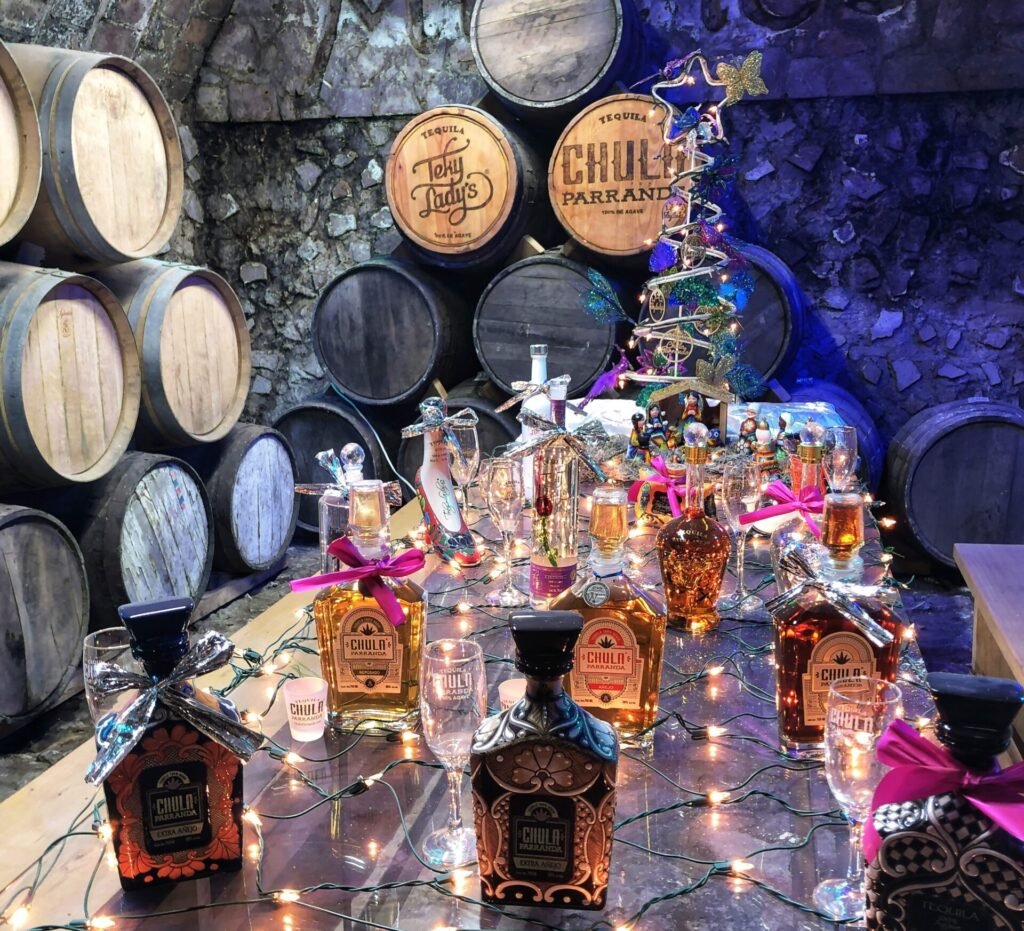
The condition of the barrels, including previous use, age, and the amount of char on the barrel burnt or toasted, all these factors will also affect the Tequila’s taste. And then comes the bottling and beautifying process. These bottles are all decked out for Christmas!
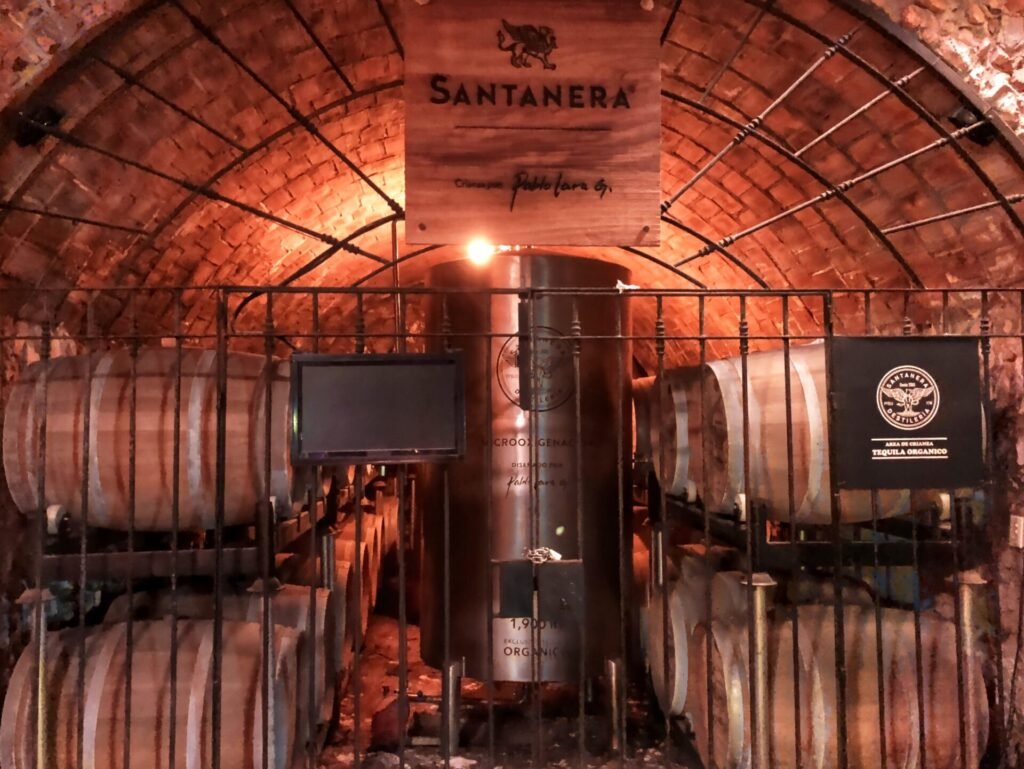
Speaking of marketing, these brilliant and extraordinary Santanera barrels get the privilege of listening to Beethoven 24/7 from the fermentation to the barreling process, which is said to provide a more “well-rounded”tequila. We’ll never know if this classical music pampering actually affects the flavor… the bottles are exclusively marketed to three countries… the US, Japan and Russia at a price that would make you want to believe it is really something special.
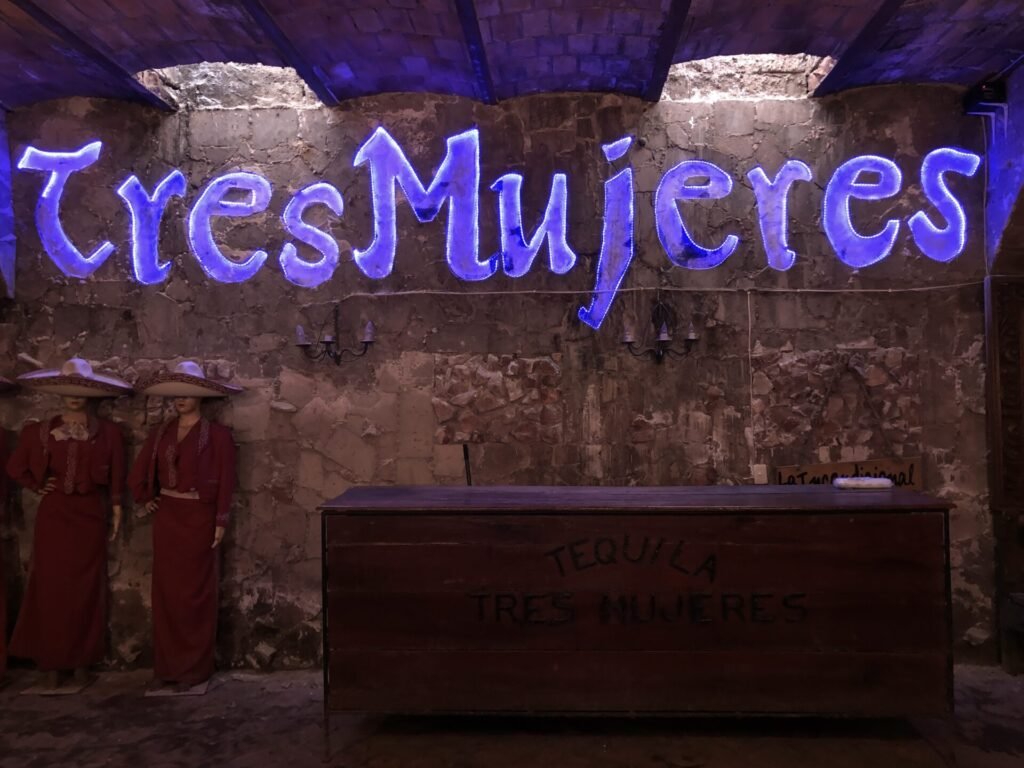
Ok, time for our first tasting. Interestingly, only 5% of the Tequila at the Tres Mujeres distillery is branded under that name. The rest, a whopping 95%, is sold under other labels.
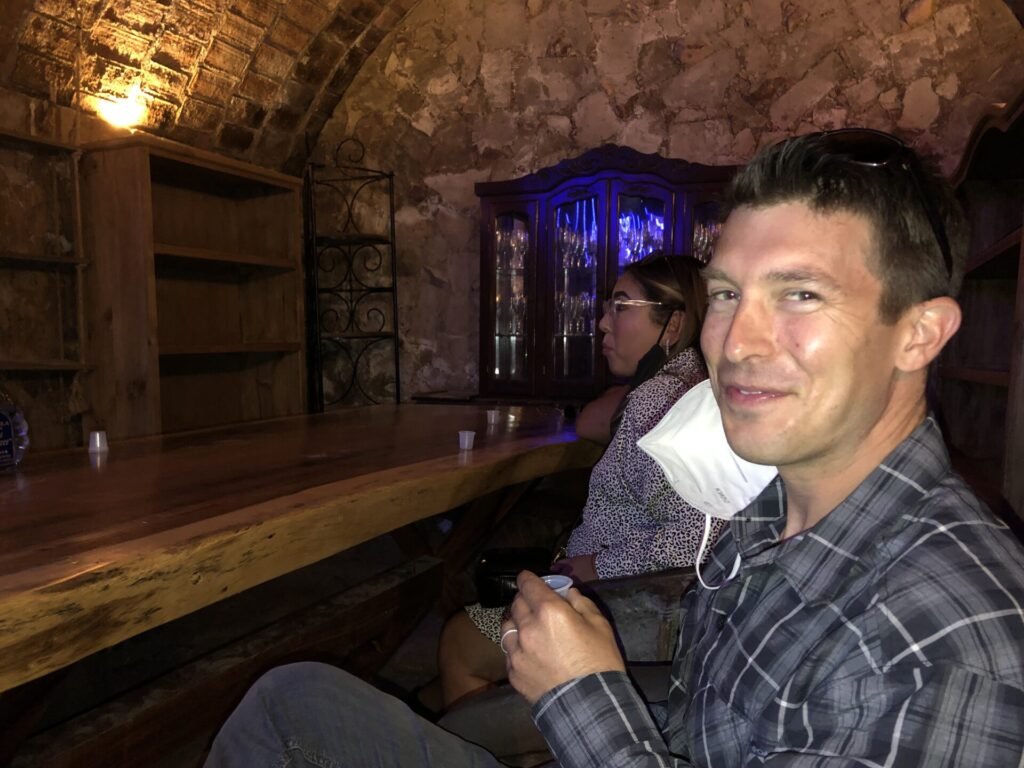
During the tasting process we learned that we’ve been doing Tequila shots all wrong. Here is how to do it correctly.
1) Stop thinking you’re still in college (or 23 in Cancun singing Britney Spears on Karaoke…Mandy). That said, firstly, never shoot
2) inhale while smelling the aroma
3) take a sip, hold and gently swish it throughout your mouth a couple times
4) swallow
5) exhale.
If it’s good Tequila, there won’t be a burn. You’ll get a pleasant tingling in your mouth and the subtle sweet smokyness will be more noticeable. It’s amazing how this enhanced the flavor of the agave over the alcohol. You may also find that there are four different types & colors of Tequila produced, each also has its distinct flavor that it picks up during the barrel aging process if there is one: CLEAR/WHITE is not barrel aged, REPOSADO is aged only slightly up to a year in a barrel, AÑEJO aged 1-3 years , and EXTRA AÑEJO aged for longer than 3 years usually at least 5. Our personal favorite was the anejo. Note: Mexicans don’t typically drink with lime and salt. That’s something they keep for Americans (and college kids.)

There is a lot of knock off Tequila out there and when you’ve had the genuine thing it makes all the difference in really being able to savor the flavors.
Here’s what we learned to look for:
-it must be at least 35% proof to be called tequila. The maximum produced is 55% and the US is only able to sell up to 40%
-always look for 100% agave. Less hangover.
-if it doesn’t say the word “Tequila” it’s not regulated and the product will be inferior. There should be a government sticker, which states it’s registered and produced authentically.
-there are a lot of people who try and sell fake Tequila, which as mentioned can be lethal.
-We learned a neat trick to check your tequila authenticity… pour a little on your hands. Rub them together like sanitizer (also effective for that?.) If your hands are left soft, and smell distinctly like agave (slightly sweet and smoky), it’s 100% real. If they don’t, you may be getting ripped off!
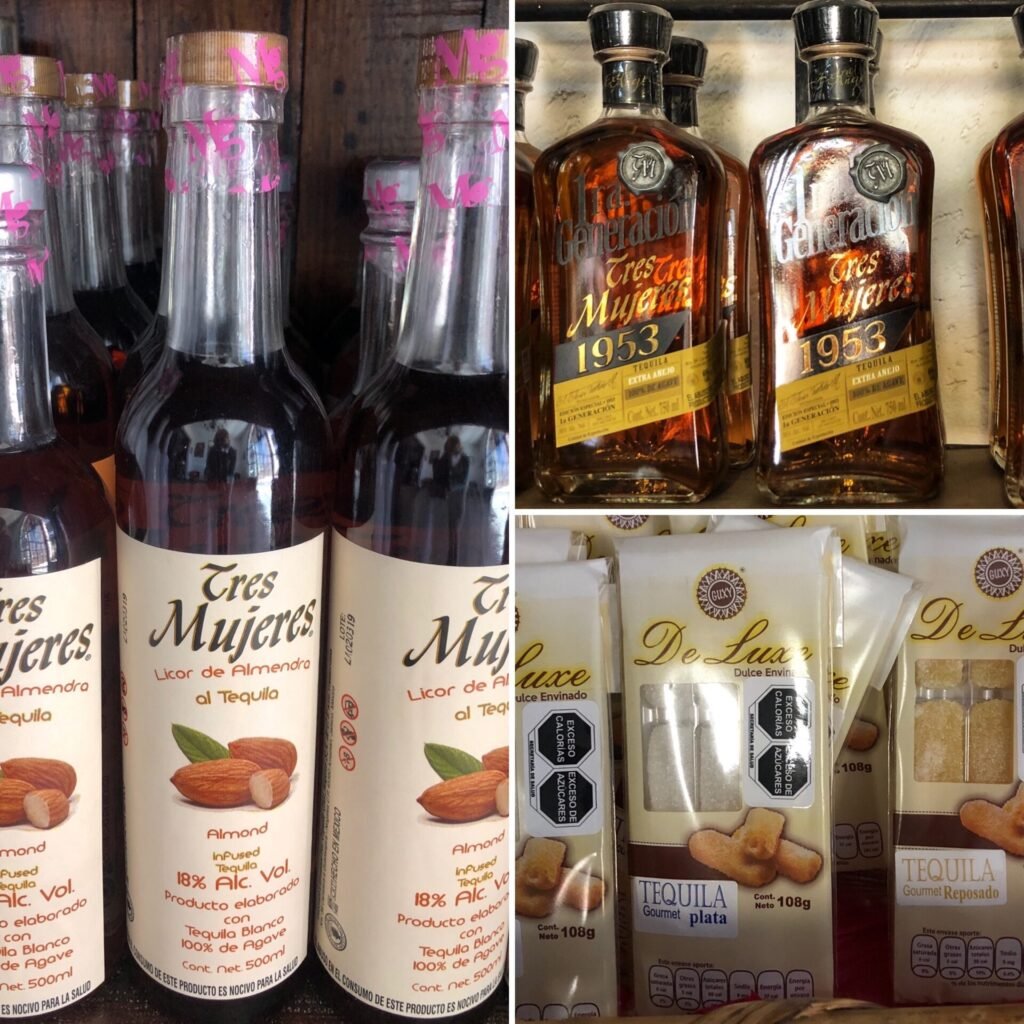
In the shop, we found and tasted almond Tequila, one of our favs, thanks to Mandy’s dad who had tipped us off to this variant. Unfortunately, based on our new knowledge we found out that this wasn’t “real” Tequila but only infused. We also found the 1953 version of Tres Mujeres, which was infused with apple, cinnamon and nuts. Mmm. Or, if you prefer to eat your Tequila (or give it to a mature 10 year old), they also offered tequila candy.
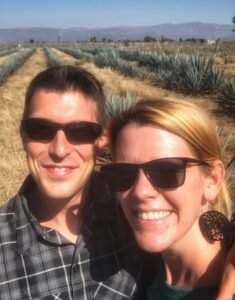
Grabbing a selfie in the lovely agave fields.
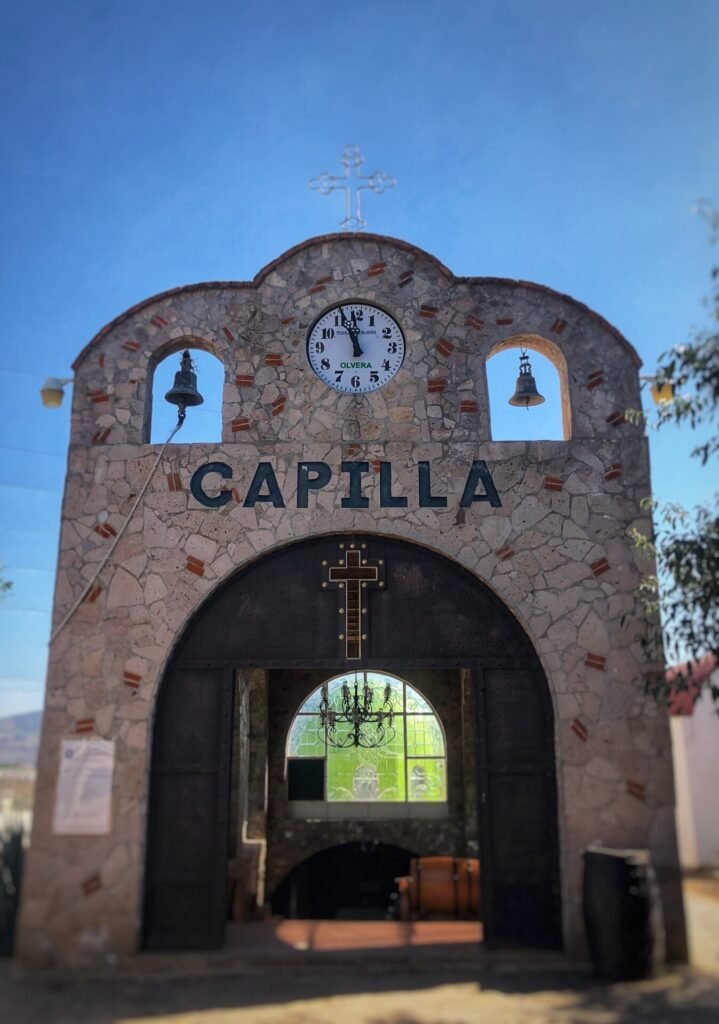
The capilla (chapel) is a subterranean church at the distillery mostly used for events.
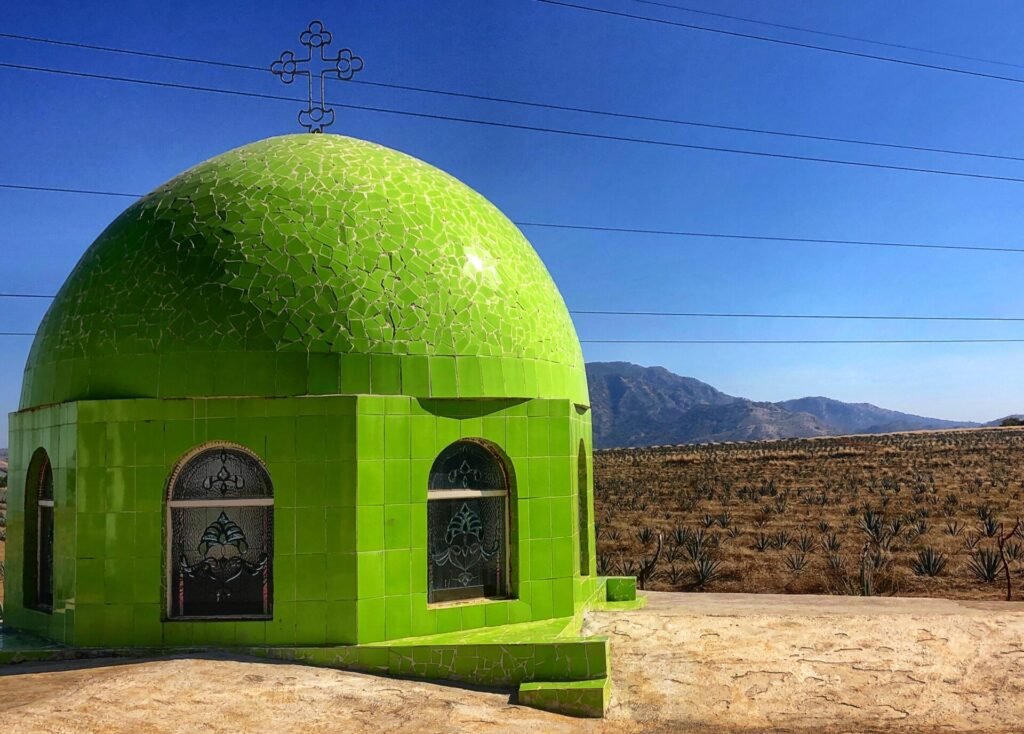
It has a unique, eye-catching dome which contrasts the fields of agave quite poetically.
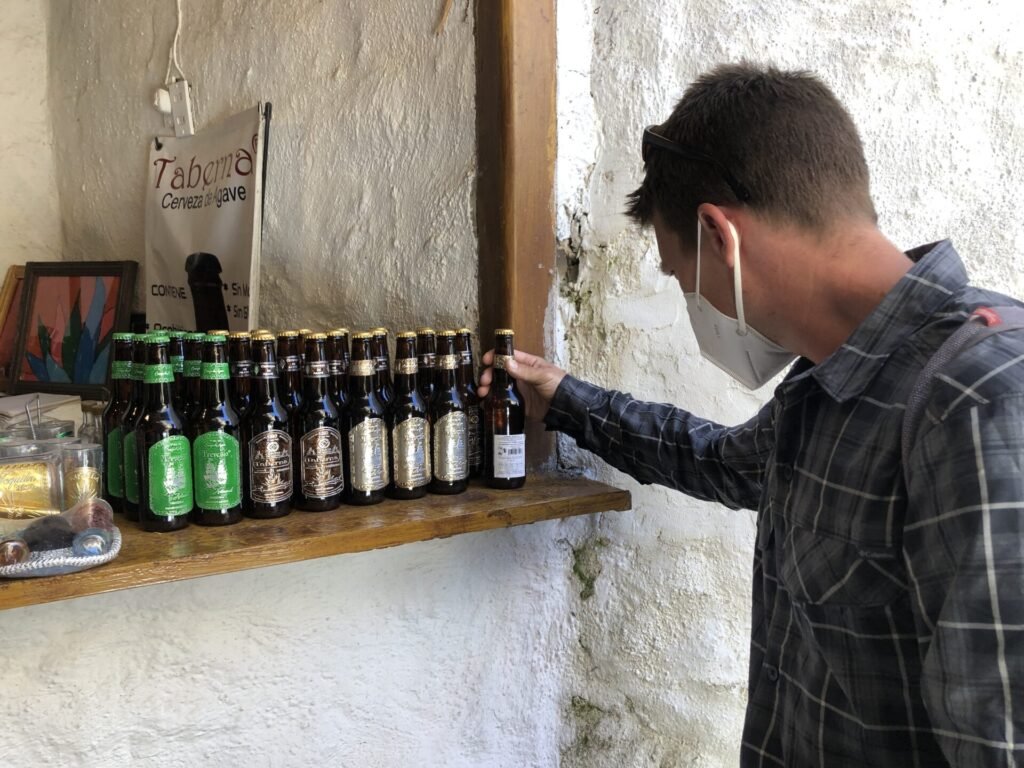
For the next stop, we went to the TRUE actual home of Tequila, a tiny teacup pueblo called Amatitán, which is where it got its start and said to have been invented hundreds of years ago. They even offered agave-infused beer which Greg was excited to check out. An ultra light bodied beer it tasted slightly syrupy and sugar candy like, or like if you diluted a small amount of agave syrup into a beer with no malt added. Interesting to try, good not great.
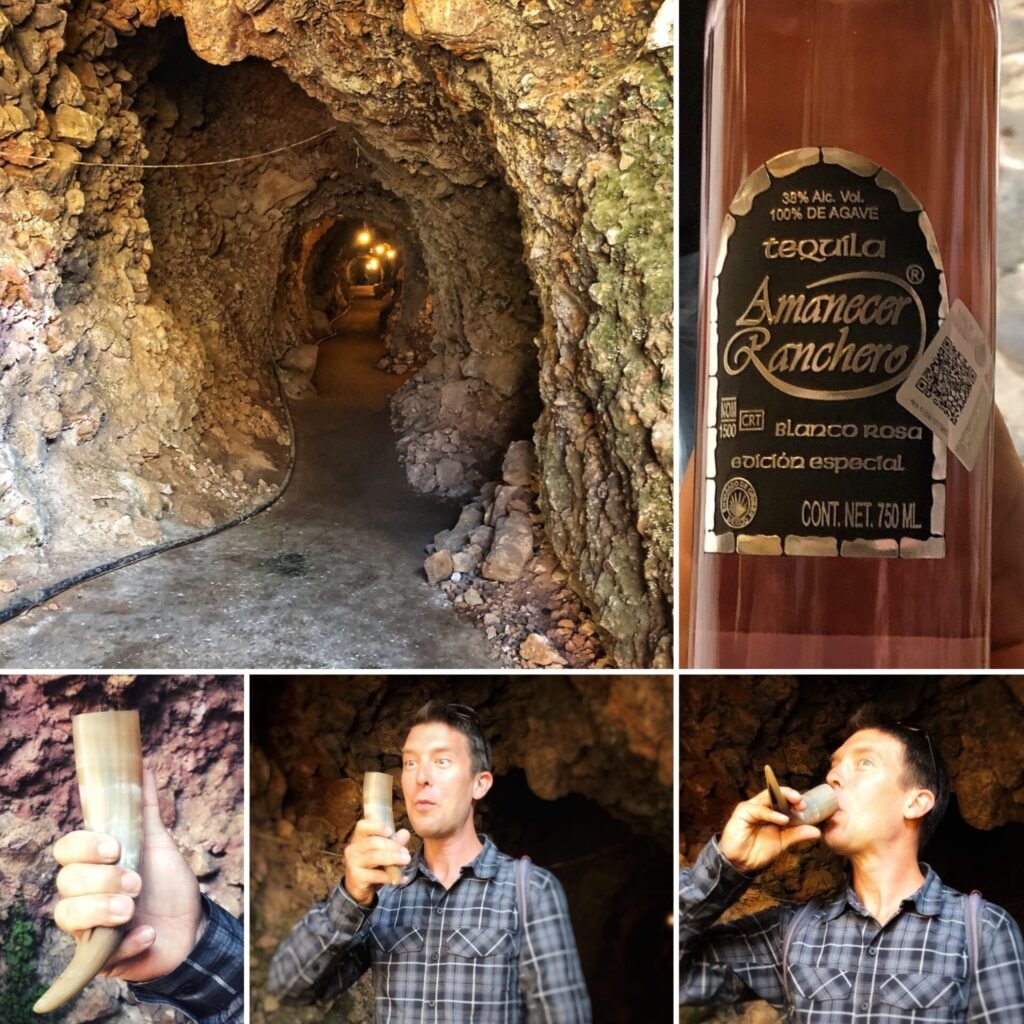
This water interestingly flows out of several man-made tunnels dug into the hill next to the plaza. These tunnels evidently connect Amatitan with Tequila which extend for miles and miles. They we dug with slave labor during the Spanish occupation of Mexico to act as a water source when water would filter down through the rock after rains. These tunnels would carry the runoff to town cisterns. According to our guide, during the Christian Revolution, worshippers would go into these tunnels to hide from government persecution and pray. Talk about bullhorn…
Top right: this is a rare pink Tequilas which gets its color from being distilled in red wine barrels. It seems to be gaining in popularity however as traditional Tequila markers experiment with new and old techniques of fermentation.
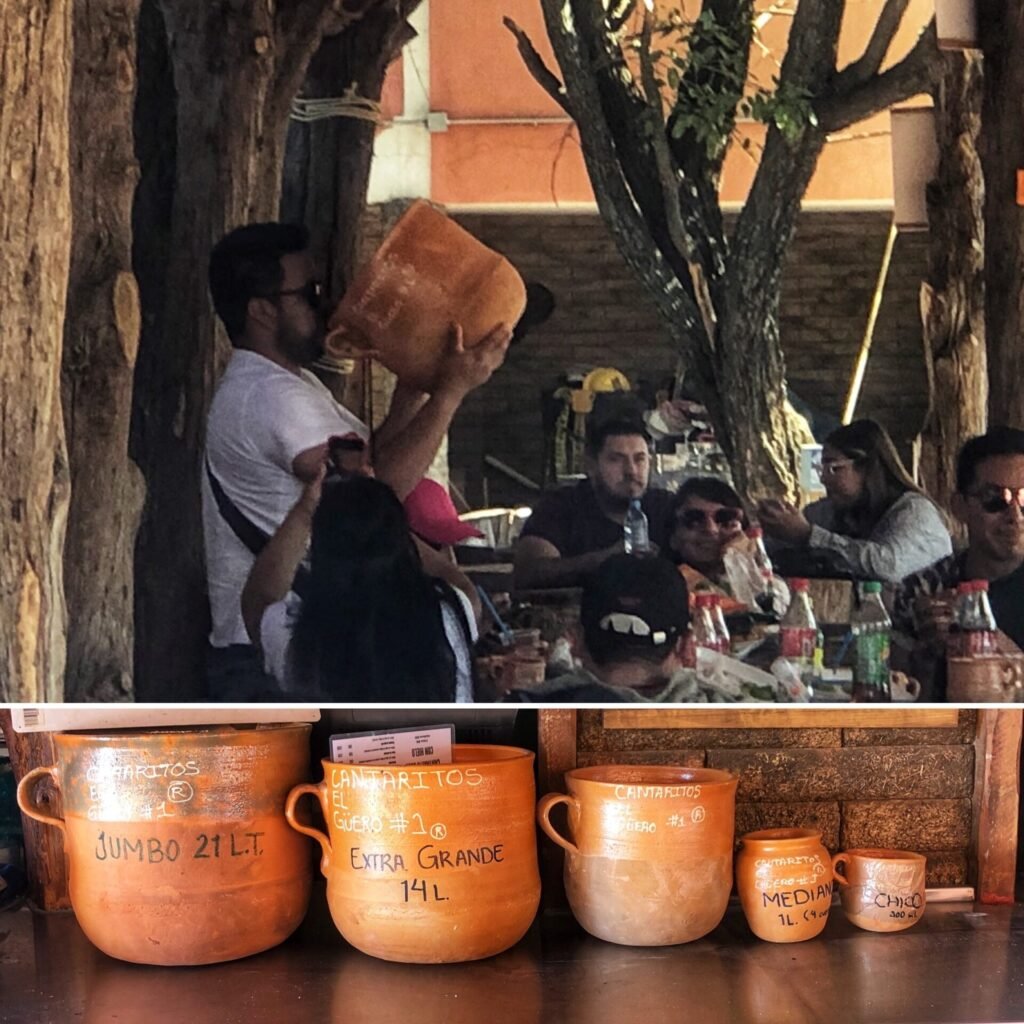
Next we stopped at grand party central, Cantaritos el Güero, for those who wanted to de-mask while they cast all inhibitions aside and chugged down more tequila cocktails, called Cantaritos. Cantaritos are mixed drinks made of orange juice, grapefruit juice, lemon juice, the soft drink Squirt and lots and LOTS of Tequila. We actually needed to sober up after the distillery so we awkwardly stood away from the crowds and marveled at the less risk adverse around us. The shocking thing about the Cantaritos were the Sizes! Chico, which seemed to hold about 4 shots of tequila to an astounding Jumbo. Jumbo included a whopping and unfathomable 21 liters of drink to pound down, of which included 3 LITERS of tequila and cost a whopping $3000 pesos ($150). You get hammered AND COVID at the same time! What a deal! ? (For the record they did temperature check and sanitize at the door, which were not sure is all that effective in this instance!)
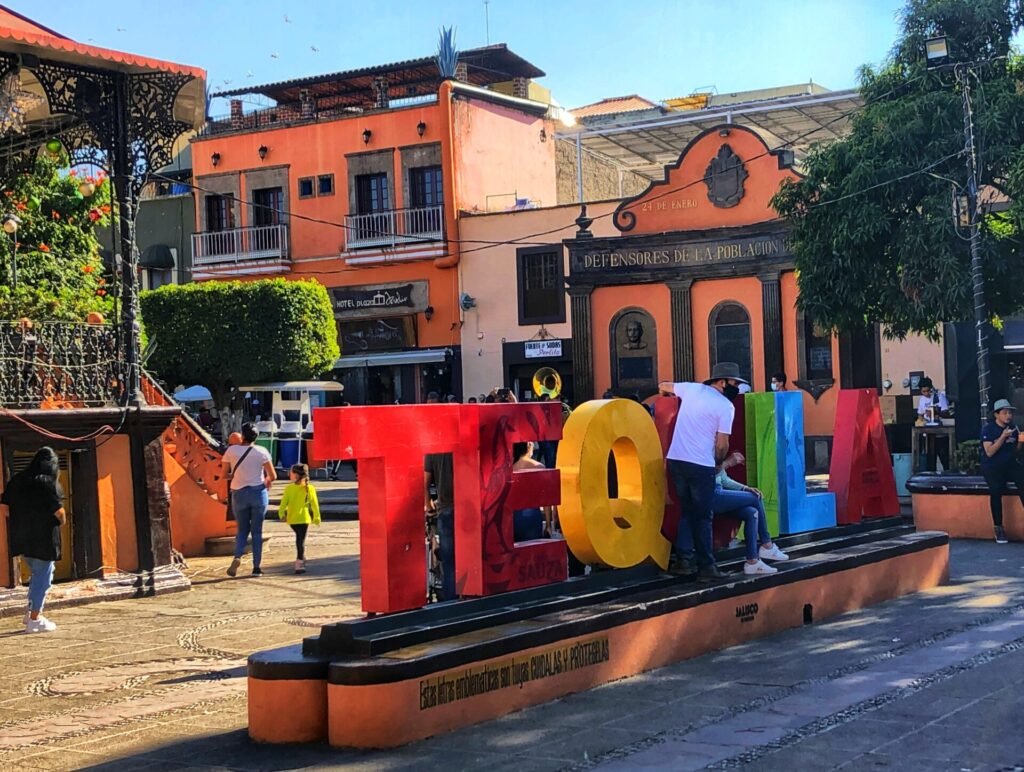
And finally, we capped off our day with two free hours in the Pueblo Magico of Tequila, near the foot of the Tequila Volcano. Yes, there is an actual Tequila volcano! Tequila the town unabashedly basks in it namesake liquor with full glory, and bragging rights; it’s exactly what you’d expect a town called to Tequila to be like with classic glasses of Tequila or Cantaritos flowing in the streets, mariachi music bursting down every street, stores and people sashaying Tequila-inspired goodies and yes, lots of stumbling visitors clamoring on letters that spell the word of the day.

The main church in the plaza.
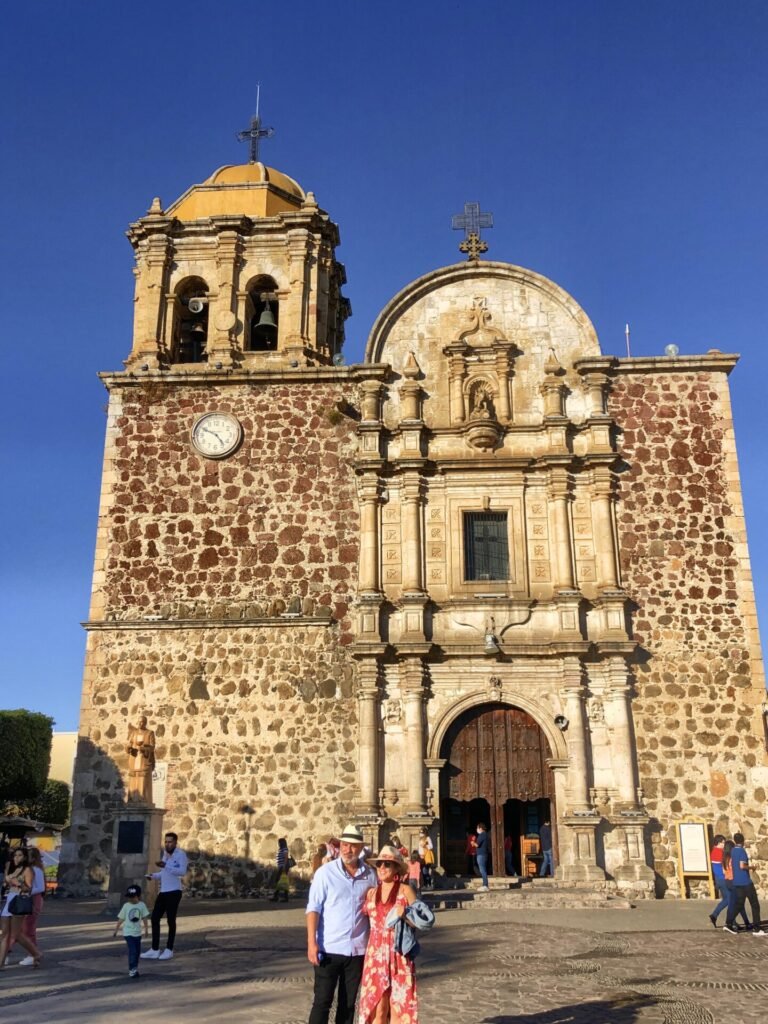
We’d imagine there’s lots of confessions going on here…these people look naughty.
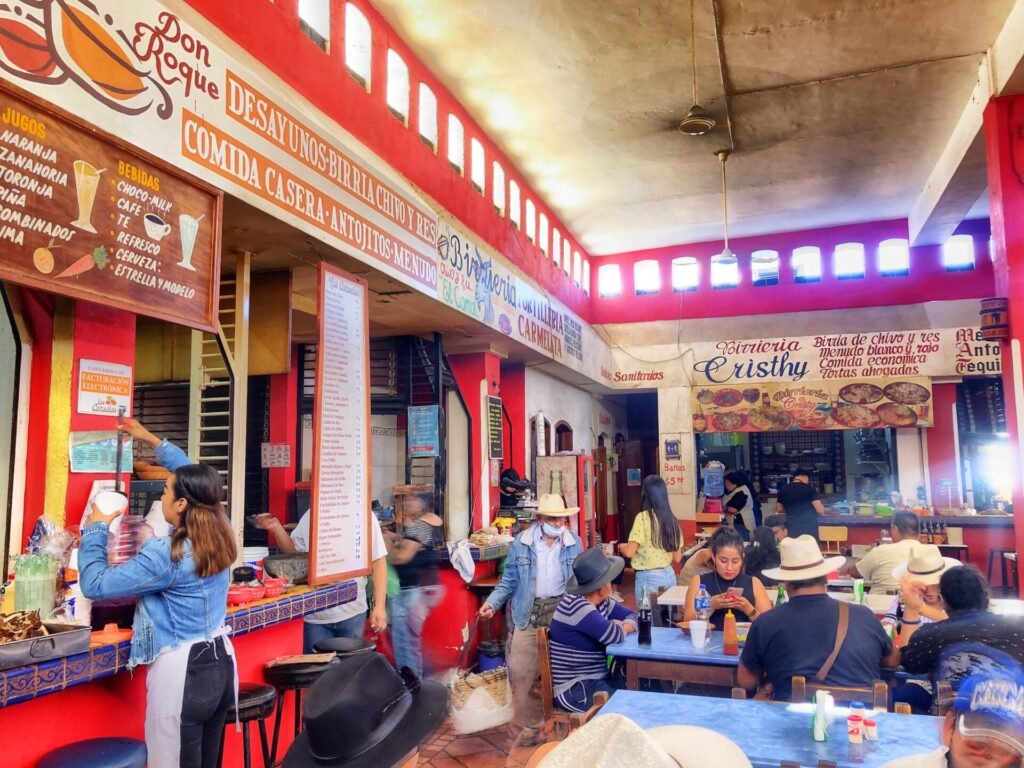
Our guide gave us several upscale touristy options for lunch and we of course plodded our way directly to the local market to soak up the tequila goodness, which as usual ended up being a very good choice.

Walking around town we discovered the tequila goddess named Mayahuel who I guess you might pray for more tequila from.
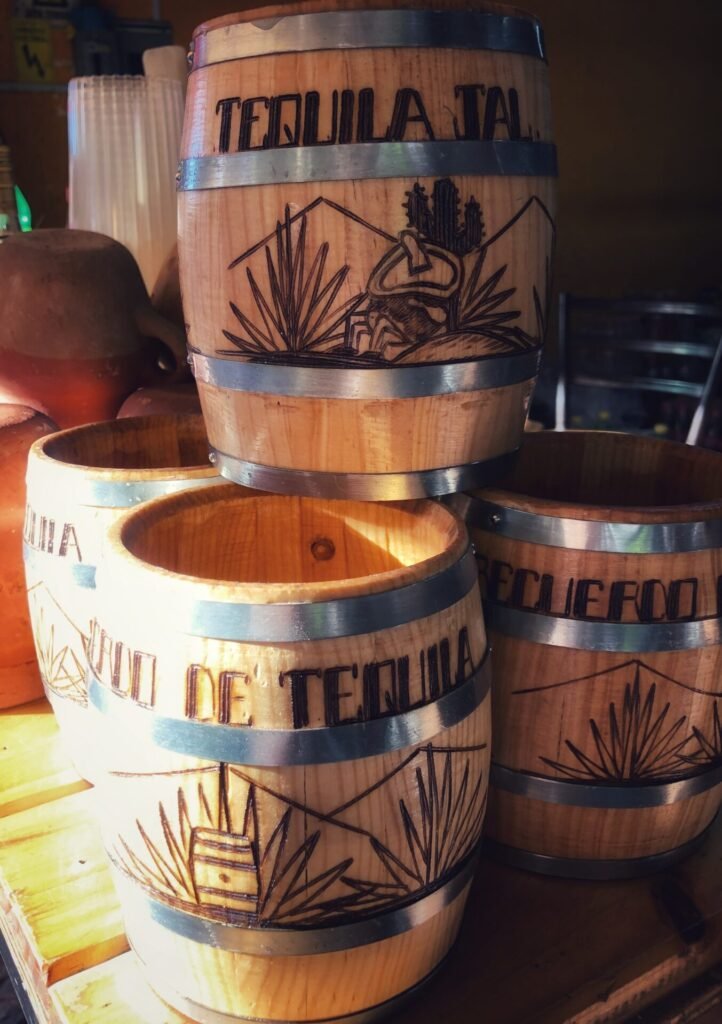
Kitschy tequila goodies.

Gracias to Dios we didn’t arrive to town in one of these ?
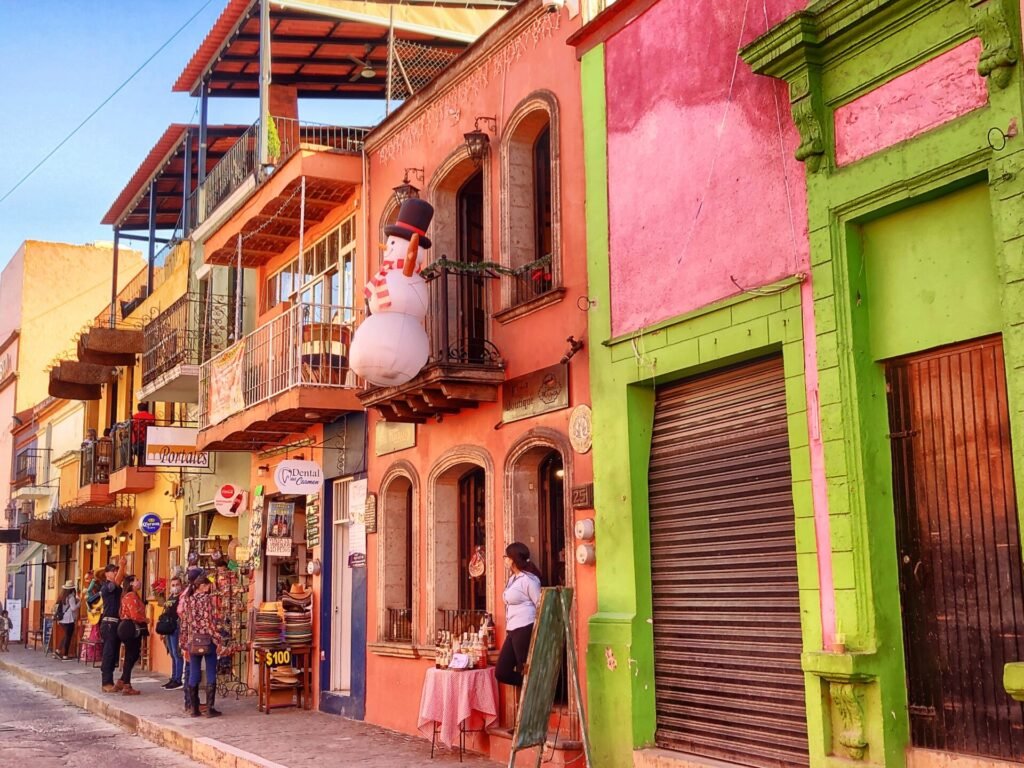
The streets of Tequila are a lot of fun and wonderful to get lost in. We imagine some people do! P.s. note the inflatable snowman….the only kind they’ll ever see. Can you imagine what a foreign concept this is to them?!
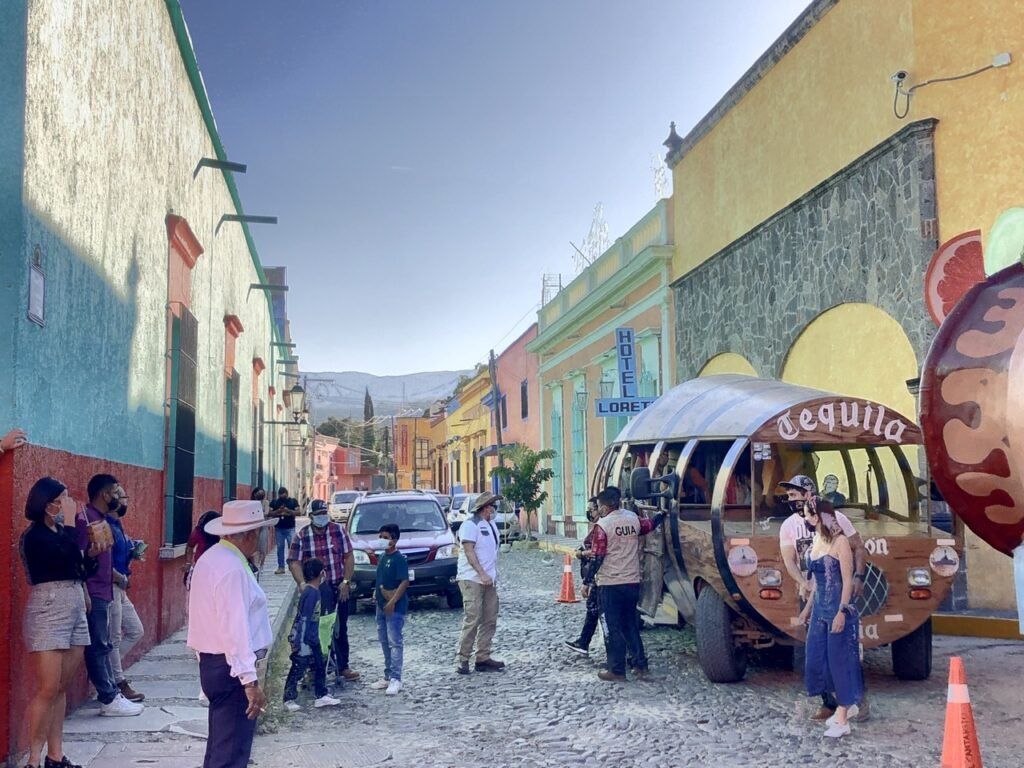
Another tequila mobile barrel booze bus blocks the view of a very picturesque street.
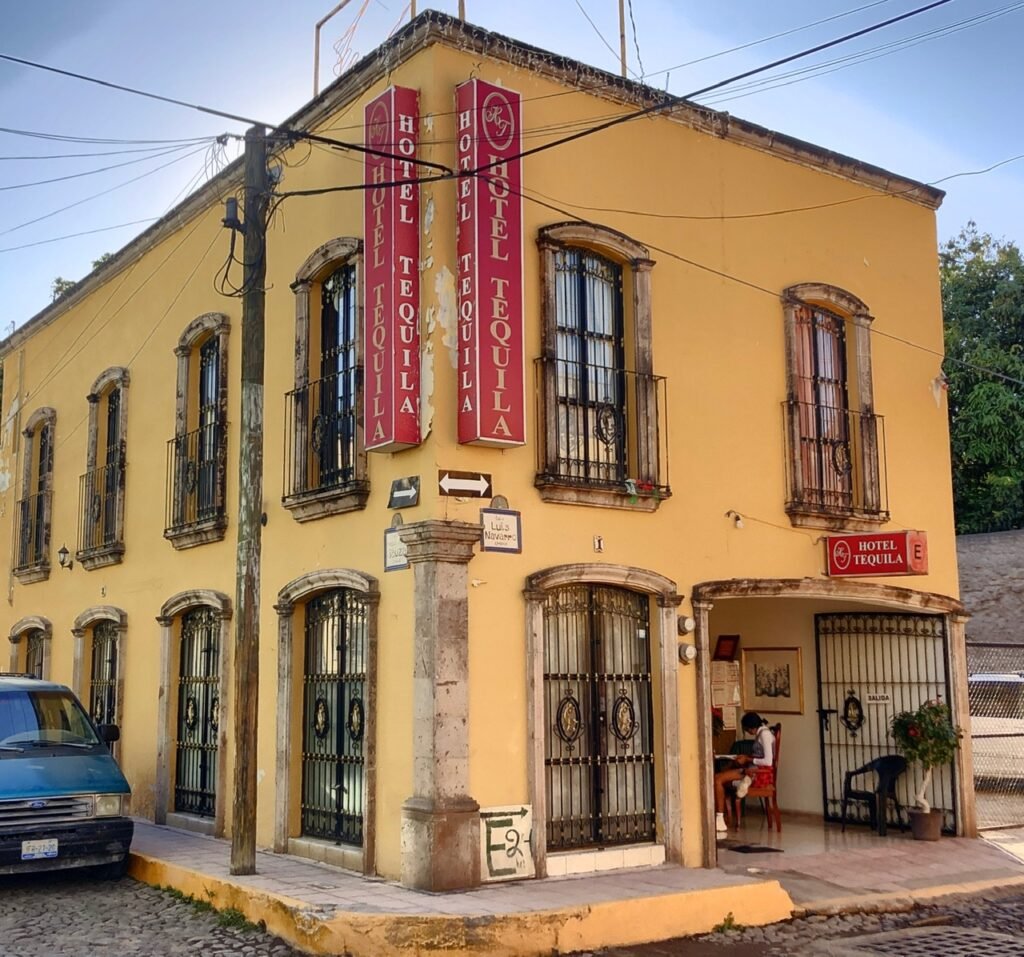
Can you live in up at the Hotel Tequila like the Hotel California? Our guess is maybe more…
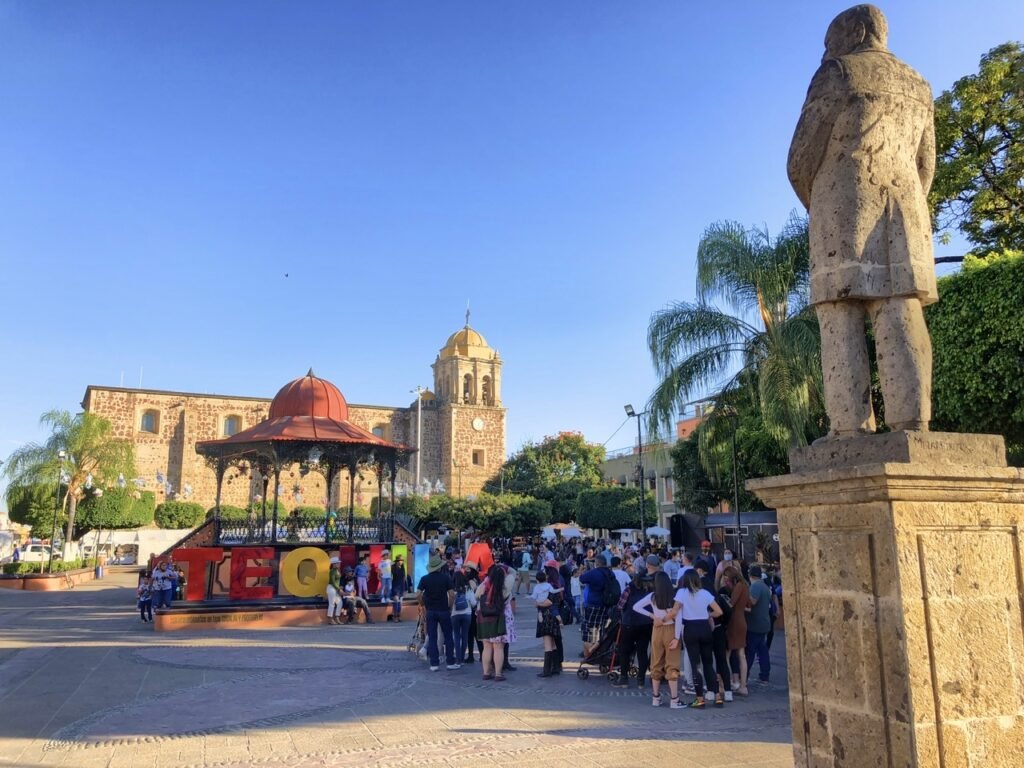
Swarms of people here as well. Fortunately easy to avoid and most, masked up except for the fratty-looking gringos with their giant sippy cups of Tequila. Oh…here we go…

